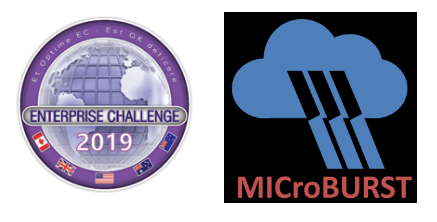AWS for M&E Blog
NGA introduces Microburst cloud pilot during Enterprise Challenge 2019
Concluding our updates from the 2019 Enterprise Challenge series of demonstrations, sponsored by the Under Secretary of Defense for Intelligence, or USD(I) and led by the National Geospatial-Intelligence Agency (NGA), we can report that NGA’s Microburst cloud concept was successfully demonstrated to many government organizations. Supported by AWS Elemental and several Amazon Web Services technology partners, this proof of concept cloud pilot—fittingly named “Microburst” to call to mind a concentrated cloud-to-ground downpour—extended numerous AWS cloud services from in-region to the remotely connected tactical edge, as well as demonstrating the ability to run mission-critical cloud services at the edge autonomously during Disconnected, Intermittent, or Low-Bandwidth (DIL) conditions. This architecture delivered a transformative end user experience by taking advantage of the full power of the cloud in connected and disconnected modes of operations.
The Microburst cloud concept introduced a variety of key products and services to the community, incorporating AWS Elemental Live software, AWS Elemental Media Services, and AWS Snowball Edge running partner applications powered by Amazon Machine Images (AMIs). Together, these solutions served to improve and modernize the process, exploitation, and dissemination of live Full Motion Video (FMV) from high-definition aerial video sensor systems to remotely situated tactical users and enterprise analysts anywhere in the world. Several testing objectives focused on a cohesive cloud strategy aimed at improving operational efficiencies found in mission systems such as:
- Deploying ubiquitous cloud capabilities from Enterprise to Edge
- Improving FMV quality, accessibility, and resiliency in the network
- Preservation and use of geospatial metadata in a web-centric architecture
The hybrid cloud concept leveraged HEVC/H.265 encoding from air-to-ground, improving overall video quality while reducing bandwidth over wireless mesh networks. The use of multi-profile adaptive bit rate encoding and packaging, along with web-enabled MPEG-DASH streaming, allowed users to consume content with ease using thin clients or browser-based user experiences. Overall, the forward-leaning solution showcased an end-to-end, cloud-first strategy for FMV, unlocking greater potential for intelligence gathering and processing. For more information around this event, in addition to other technical considerations discussed, refer to part one and part two of the EC19 blog series.

To read more about this event refer to part one and part two of the EC19 blog series.